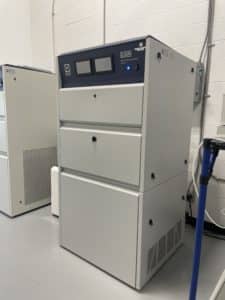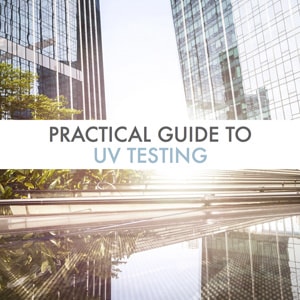PV 3930
Automotive Accelerated Weathering Standards – Volkswagen
PV 3930 is a test method exclusive to Volkswagen that describes an accelerated weathering method which relies on the use of Xenon arc light as an illuminating source in order to characterize the aging behavior of plastics, elastomers and folding top cloths. Thus, this norm relies on the guidelines of ASTM G155 and of ISO 4892-2. Micom offers PV 3930 testing as part of its UV testing services.
Aging behavior of plastic, elastomer and folding top cloths – use and factors to consider

The main factors that are to be considered when running this test are: filter type, the rain cycle, the temperature of the black standard and of the specimen chamber during the dry period, the relative humidity, the intensity of irradiation, the exposure duration and the irradiation dose.
Typical Experimental parameters
Table 1 lists the typical conditions for Q-panel apparatus and other settings have to be used for other machines. The sample size is 135 x 45 mm.
Table I: Typical conditions for accelerated weathering using the Q-panel apparatus
| Parameters | Specifications |
| Filter | Coated quartz filter and 300 nm daylight filter |
| Cycle of the rain | 102 min dry for 18 min humid |
| Rotation of the specimen | Flatbed equipment |
| Temperature of the black standard | 65 ± 2 ° C |
| The specimen’s chamber temperature during the dry period | 35 to 45 ° C |
| Relative humidity | 60 to 80 % |
| Irradiation intensity | 0.5 W/m² nm (300 to 400 nm) |
| Test length | About 1600 h |
| Dose of irradiation (endpoint) | 350 MJ/m² |
Other test methods related to PV 3930
For additional related test methods, please see ISO 11341.
If you have any questions about PV 3930, we invite you to contact us today. It will be our pleasure to answer your questions.
Practical UV Testing Guide
Sunlight exposure can have harmful impacts on carbon-based
materials such as coatings, polymers, textiles, and many others.
Learn more about our in-laboratory UV testing process in this guide.


